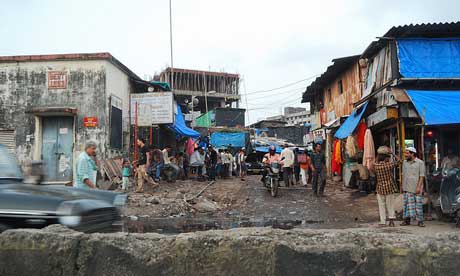
A guided tour of Mumbai's teeming Dharavi slum raises moral questions for visitors
"Welcome to Dharavi, the biggest slum in Asia. My name is Ravi and I’ll be your tour guide today.”
I was confused. I knew slums existed, but I wasn’t sure that doing a day trip around one was OK. It sounded like paying to ogle poverty. Yet tours like this are becoming more common – following favela visits in Rio and township tours in Cape Town, you can now visit the sprawling slums of Mumbai.
The company that runs these trips – Reality Tours and Travel – is keen to assert its responsible credentials: 80% of profits go to local charities, groups are limited to five people and photography is forbidden. But did that really change anything, or did it just assuage my guilt about doing something pretty grotty?
“Follow me, please, and watch where you step. There’s a lot of rubbish,” Ravi said as he disappeared into a gap between two shops.
The gap turned out to be what passed for a street in Dharavi – a narrow alley piled with rubbish. But to my surprise I realised that the rubbish wasn’t accumulated filth – it was neatly piled, awaiting recycling.
Ravi took us into one of the recycling businesses, where old bottles, buckets and milk crates are cleaned, melted, dyed, then sold to be turned into umbrella handles and plastic dinosaurs. The shop floor was tiny – two narrow rooms processing just 600kg of recycled plastic a day. We climbed up onto its roof and looked out over the slum. All around was a hotchpotch of shanties, each tin roof bearing a mountain of old paint cans, plastic chairs or sacks of empty shampoo bottles.
“Dharavi houses about a million people in 1.7 sq km,” Ravi told us. “Yet it is full of small-scale industries like the one downstairs. This slum has an annual turnover of US$665 million (£330 million).”
According to its website, Reality Tours’ goal is to show that Dharavi isn’t just about poverty and hardship, but about ‘enterprise, humour and non-stop activity’. After the plastic recyclers, we went on to visit a cloth-dyer, a sheepskin factory and some friendly bakers in a tiny, sweaty basement.
We even went into one room where a huge vat sat bubbling full of disgusting brown gunge – old face creams and beauty products were being boiled to make huge bars of soap. And wherever we went faces were smiling, people were friendly. Kids mobbed us to practise their English. The locals seemed as intrigued by us as we were by them.
I certainly felt welcome in Dharavi and the tour challenged some of my admittedly simplistic assumptions about slums. People don’t sit around all day bemoaning their lot and looking glum; they get on with going to work, playing in the street, gossiping in doorways, smiling, laughing, crying – in other words, they do all the things we all do, wherever we live.
And as for worrying about invading their privacy, that was actually a case of me imposing my Western values on them. In Dharavi, people live on top of each other, as they do in much of India. There was no privacy to invade.
But the tour left me with doubts. The people seemed happy and hard working. And that’s the problem: as on all tours, we were shown a snapshot chosen to illustrate a certain point – namely that Dharavi wasn’t just grim and depressing, but was a place of energy and industry.
We also saw open sewers and babies with swollen bellies, whole families crammed into the tiniest of rooms, and alleys flooded with unspeakable black filth. Sometimes the streets became so narrow that the buildings above met, leaving the residents in perpetual night.
The point was that this is a slum and it faces all the same problems as other slums – lack of safe water, security and decent jobs.
Even that impressive figure of US$665 million doesn’t bear close scrutiny. Share it between a million people and that’s just US$665 per person – less than one-fifth of the national average wage in India.
So is it OK to go on a slum tour? Dharavi isn’t the worst place to live. But it’s not good enough, either. Travel is all about getting under the skin of a place. You can only do this for yourself, so go on the slum tour. Just remember: in Dharavi, it’s easy to be fooled by what’s on the surface.